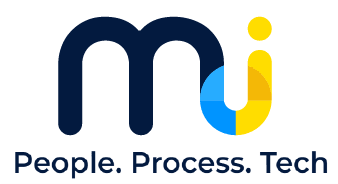Think of a product or a service you offer and ask yourself, how much more successful could that product or service be if it interfaces with technology, media and logistics? If you had technology that could showcase and sell that product or service to anyone, anywhere at any time. If you used the media to draw attention, and market this product or service to as many potential buyers as possible. And finally, assuming that your application of these tools are successful, you would need to position that product/service to be delivered to your customer through the use of logistics.
As you observed here, these three concepts were merged together to create a smooth process of how to make your product or service do well.
Now, I know these are very broad areas and may raise the question of how do we narrow them down to your specific product or service needs in the context of your business. But thinking about what success looks like for your product or service means you must have these discussions at some point and may very well agree with the argument being put forward.
I created the concept of TML from researching how industries and sectors are combined to work as a unified effort towards a long-term goal.
I particularly like the story of how Technology, Media and Telecom (TMT) merged to portray how each sector relies on each other and has been doing so for years. The TMT industry segment covers a broad range of sectors and sub-sectors from hardware, software and content creation and distribution.
Investopedia.com noted that TMT is used by investors, traders and market participants as a way of keeping interrelated companies together. http://www.investopedia.com/terms/t/technology-media-and-communications-tmc-sector.asp
The TML industry and how it applies to products and services became very interesting to me. One can argue that when a company decides to trade a product or a service albeit something new that the market may not have seen or value added to an existing market need, the use of TML becomes an integral part of that trade decision.
In the context of products and services creation and delivery, here is my breakdown of the TML.
Technology
Software and Hardware to include applications development and distribution, internet, ecommerce and eBusiness activities, computer and mobile devices
Media
Content and digital medium to include creation, publishing, distribution and advertising
Logistics
Transportation and storage to include shipping, warehousing, consolidation, packaging, distribution, production, inventory
By combining these sectors, it becomes easy to see how this approach could result in successfully delivering products to marketplaces at potentially less cost than if they were being viewed individually.
Note that all the areas in a TML process does not necessarily apply to every products and services. Together the TML includes hundreds of sub-sectors that may not even be necessary when creating a new product.
In the modern era, a successful product or service interfaces with the TML process. Given that all products and services are designed to be used or consume in a marketplace, it means TML is highly involved in those processes.
Look at a company like Amazon. They have earned the title of the largest online retailer and for the past 22 years have been working on a TML model to service its b2b and b2c customers. Other companies like Netflix and eBay also works with this model.
The bottom line is to get small businesses to view this model as a possible game-changer by re-imagining the way a product move between different points. We could certainly see more products being sold in more places if we can use more technology to make the process of getting products and services to our customers easier. In addition, use media to draw attention to those products and services while en route to customers or even before they order it.
Written by:
Ricardo Berris – Founder and President of MI Group.


